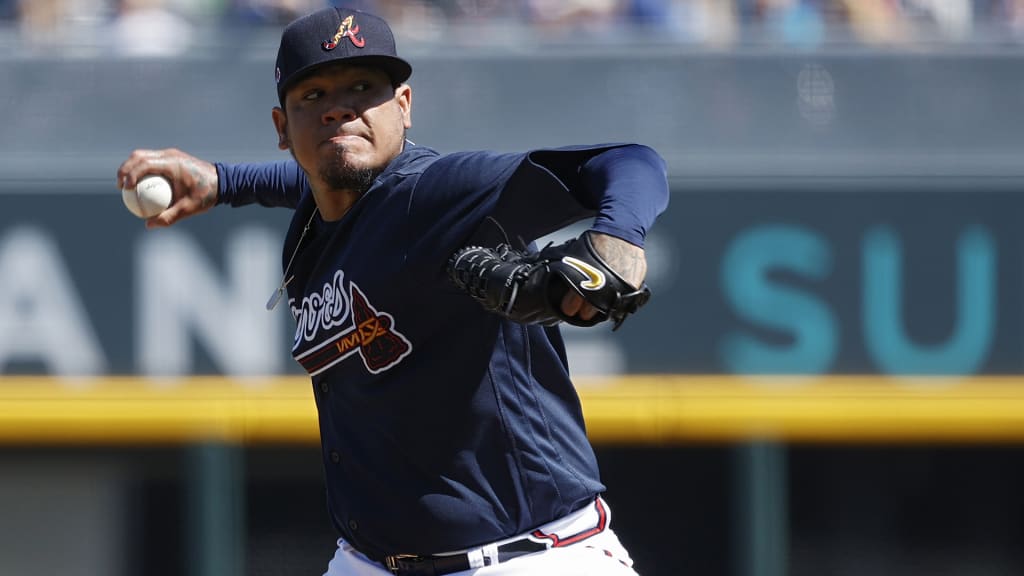
ATLANTA -- Spring Training’s most intriguing week was postponed this past weekend when the coronavirus pandemic forced many players to leave their respective camps. But what Félix Hernández, Austin Riley and other Braves did over the past month could still influence the roster decisions that would still need to be made when the regular season resumes.
So, as we wait to learn when baseball might resume, here are the five most influential developments from Braves’ camp this year:
The rejuvenated King:
As soon as Hernández arrived in camp in much better shape, it was apparent he was determined to extend his career. The 33-year-old right-hander wasn’t overpowering as he recorded 14 strikeouts and surrendered 13 hits while allowing just three runs over 13 2/3 innings. But with his right shoulder finally healthy, the former flame-thrower showed the potential value of now being able to attack both sides of the plate with his mix of two-seamers, curveballs and changeups.
No longer armed with the plus fastball that helped him become recognized as King Félix, the 2010 American League Cy Young Award winner is now attempting to prove he can be crafty with a fastball that sat between 85-89 mph during his four spring starts. The absence of Cole Hamels increased the odds of Hernández gaining the $1 million salary attached to his Minor League deal. But even if Hamels is ready by the time the regular season starts, the Braves may see value in giving Hernández the rotation’s fifth spot, even if it’s just on a short-term basis.
Hamels’ status
When the Braves opened Spring Training on Feb. 12, they revealed Hamels would be at least three weeks behind because he had developed left shoulder inflammation in January. But the projected dates for him to join the rotation continued to be pushed back as manager Brian Snitker said it was too early to predict when the veteran lefty would even be cleared to begin a throwing program.
As the final week of camp progressed, a mid-May season debut seemed to be an optimistic, but still somewhat realistic, guess for the 36-year-old Hamels. But while it’s still unclear when the Braves might start gaining on-field value from this $18 million investment, this unexpected delay has seemingly lessened the percentage of games that might be played without Hamels’ availability.
Riley’s revival
While you should never be overly influenced by Spring Training results, you can still be encouraged by guys like Riley, who produced a 1.080 OPS while striking out just five times over 32 plate appearances in Grapefruit League play. His massive power was on display when he hit a 450-plus foot homer against the Rays on March 3. But the most encouraging development was seeing him use better balance and improved plate discipline to distance himself from what ailed him as he struck out in 36.3 percent of his plate appearances last year.
Time will tell when Riley might become Atlanta’s everyday third baseman. But these past few weeks showed he’s much closer to getting that role than many might have envisioned as they spent the winter left to simply dwell on the steep decline he endured over last season’s final three months.
Catching promise
The Braves will need to acquire some internal insurance to protect themselves as they prepare to enter this season with two catchers -- Travis d’Arnaud and Tyler Flowers -- who are both on the other side of 30. Shea Langeliers can’t fix this immediate need as he prepares for his first full professional season. But the 22-year-old catcher, who was taken with the ninth pick in last year’s MLB Draft, spent the past month impressing enough to believe he might be MLB ready just a year from now.
William Contreras, who had previously been the club’s top catching prospect, stalled offensively last year at the Double-A level. Langeliers has an MLB elite level arm and his bat could continue to exceed expectations. His success in his first big league camp gave the Braves further reason to be encouraged by the value they could gain as Contreras and Langeliers now push each other in the pursuit to be the club’s catcher of the future.
Ozuna concerns
Throughout the winter, scouts repeatedly expressed concerns about Marcell Ozuna’s defensive shortcomings. They were seen as he showed limited range and limited arm strength over the past few weeks. But further intensifying concerns about this outfielder, who signed a one-year $18 million contract in January, were his unimpressive plate appearances. He went 2-for-24 and struck out in 12 of 25 plate appearances.
Like Hamels, Ozuna might benefit from an extended opportunity to get ready for the regular season. But what he showed thus far this year certainly didn’t quiet those who believe the offensive decline he realized in St. Louis the previous two seasons might have been a sign of things to come.
